-
 Bitcoin
Bitcoin $86,250.6982
1.63% -
 Ethereum
Ethereum $1,890.1026
-0.98% -
 Tether USDt
Tether USDt $1.0000
0.01% -
 XRP
XRP $2.1367
0.29% -
 BNB
BNB $603.5934
-0.76% -
 Solana
Solana $129.4201
2.45% -
 USDC
USDC $1.0000
0.00% -
 Dogecoin
Dogecoin $0.1724
0.45% -
 Cardano
Cardano $0.6839
0.62% -
 TRON
TRON $0.2381
0.57% -
 Toncoin
Toncoin $3.9840
-0.47% -
 Chainlink
Chainlink $13.8431
-2.30% -
 UNUS SED LEO
UNUS SED LEO $9.3956
0.41% -
 Stellar
Stellar $0.2705
-1.46% -
 Avalanche
Avalanche $19.2650
-0.80% -
 Sui
Sui $2.4309
0.03% -
 Shiba Inu
Shiba Inu $0.0...01260
-0.64% -
 Hedera
Hedera $0.1716
0.58% -
 Polkadot
Polkadot $4.1457
-0.42% -
 Litecoin
Litecoin $85.5964
0.72% -
 Bitcoin Cash
Bitcoin Cash $308.6728
-0.07% -
 MANTRA
MANTRA $6.3356
0.99% -
 Bitget Token
Bitget Token $4.5842
-0.52% -
 Dai
Dai $0.9997
-0.04% -
 Ethena USDe
Ethena USDe $0.9999
0.01% -
 Hyperliquid
Hyperliquid $13.7596
4.34% -
 Pi
Pi $0.6794
-3.81% -
 Monero
Monero $219.4683
1.07% -
 Uniswap
Uniswap $6.1878
-0.70% -
 Aptos
Aptos $5.3777
0.02%
How to Build GPU Mining Equipment for Beginners
GPU mining uses graphics cards to solve crypto problems and earn rewards; profitability depends on crypto type, network difficulty, and electricity costs.
Mar 31, 2025 at 02:49 am
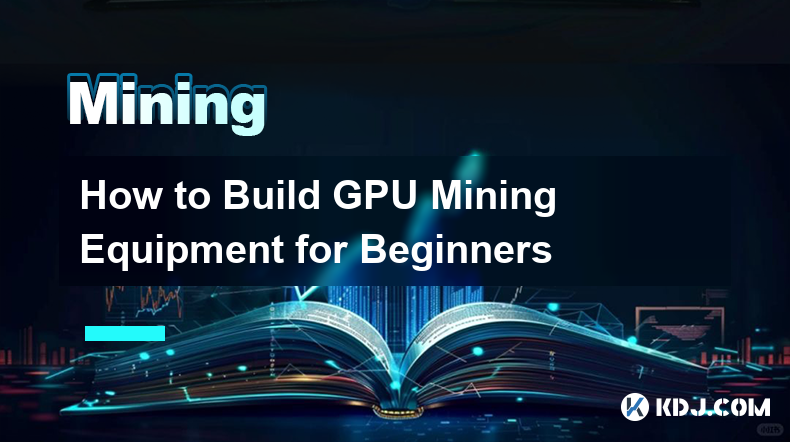
Understanding the Basics of GPU Mining
Before diving into the construction process, it's crucial to understand the fundamentals of GPU mining. GPU mining leverages the parallel processing power of graphics cards (GPUs) to solve complex cryptographic problems, validating transactions on a blockchain and earning cryptocurrency as a reward. The profitability of GPU mining depends on several factors, including the cryptocurrency being mined, the difficulty of the network, and the cost of electricity. Understanding these factors is vital before investing in equipment.
Choosing the Right GPU
Selecting the appropriate GPU is paramount. High-end GPUs with ample VRAM (video RAM) and a high hash rate are essential for efficient mining. Cards from Nvidia's RTX 30-series or AMD's RX 6000-series are often preferred, though the optimal choice depends on the specific cryptocurrency and its mining algorithm. Consider factors like power consumption and price-to-performance ratio when making your selection. Remember to check for compatibility with your motherboard and power supply.
Assembling the Mining Rig: The Hardware Components
Building a GPU mining rig requires several key components beyond the GPUs themselves. You'll need a motherboard with enough PCIe slots to accommodate your GPUs, a powerful CPU (although not as crucial as the GPUs), ample RAM (8GB-16GB is usually sufficient), a robust power supply capable of handling the high power draw of multiple GPUs, and a suitable case. Don't underestimate the importance of a reliable power supply; underpowering can lead to instability and damage.
Assembling the Mining Rig: Step-by-Step Guide
The assembly process involves several steps:
- Install the CPU and RAM: Begin by installing the CPU and RAM into the motherboard according to the manufacturer's instructions.
- Mount the Motherboard: Secure the motherboard into the case.
- Install the GPUs: Carefully install the GPUs into the available PCIe slots. Ensure proper seating to prevent damage.
- Connect the Power Supply: Connect the power supply to the motherboard and GPUs. Use appropriate cables and connectors.
- Connect Storage: Install an SSD or HDD for operating system and mining software storage.
- Cable Management: Organize the cables neatly to improve airflow and prevent overheating.
Choosing the Right Motherboard and Power Supply
The motherboard should have enough PCIe slots for your GPUs and support the CPU you've chosen. Look for motherboards specifically designed for mining, as these often have more PCIe slots and better power delivery systems. The power supply is critical. Calculate the total power draw of all components (GPUs, motherboard, CPU, etc.) and choose a power supply with sufficient wattage and ample connectors. A higher-wattage power supply with multiple PCIe power connectors is recommended.
Setting Up the Mining Software
After assembling the hardware, you need to install and configure mining software. Popular options include NiceHash, PhoenixMiner, and TeamRedMiner. Each software has its own configuration settings, so carefully read the documentation and follow the instructions. You'll need to specify the mining pool, wallet address, and other relevant parameters. Proper configuration is essential for optimal mining performance.
Cooling Considerations: Preventing Overheating
Maintaining optimal temperatures is crucial to prevent GPU damage and maximize performance. Adequate cooling is essential. Consider using multiple case fans, a dedicated GPU cooling solution (like aftermarket coolers or active backplates), and monitoring temperatures using software like MSI Afterburner. Poor cooling can significantly reduce lifespan and mining efficiency.
Monitoring Your Mining Rig: Performance and Efficiency
Regular monitoring is essential to ensure your mining rig is operating efficiently and without issues. Use monitoring software to track GPU temperatures, hash rates, and power consumption. Identify and address any anomalies promptly to prevent potential problems. Consistent monitoring helps optimize performance and identify potential hardware failures early.
Overclocking for Increased Hash Rate (Advanced)
Overclocking can increase the hash rate, but it also increases power consumption and heat generation. Proceed with caution and only if you understand the risks involved. Start with small increments and carefully monitor temperatures and stability. Improper overclocking can lead to hardware damage.
Choosing a Mining Pool
Mining pools aggregate the hashing power of many miners to increase the chances of finding a block and earning rewards. Choose a reputable mining pool with a good track record and low fees. Research different pools and compare their fees and payout structures. Joining a pool is usually a necessary step for successful cryptocurrency mining.
Security Considerations
Protect your mining rig and cryptocurrency assets by implementing strong security measures. Use strong passwords, keep your software updated, and consider using a dedicated mining operating system (like HiveOS) for enhanced security. Regularly back up your wallet and keep your software updated to mitigate security risks.
Frequently Asked Questions
Q: What is the cost of building a GPU mining rig?
A: The cost varies greatly depending on the number and type of GPUs, other hardware components, and the current market prices. Expect to invest several hundred to several thousand dollars.
Q: How much can I earn mining cryptocurrency?
A: Earnings depend on several factors including the cryptocurrency being mined, the difficulty of the network, the hash rate of your GPUs, electricity costs, and the pool fees. Profitability can fluctuate significantly.
Q: Is GPU mining profitable?
A: The profitability of GPU mining is highly dependent on various factors and is not guaranteed. Thorough research and cost analysis are essential before investing. It is not always profitable and can change quickly.
Q: What are the risks involved in GPU mining?
A: Risks include hardware failure, fluctuating cryptocurrency prices, increasing mining difficulty, high electricity costs, and potential security vulnerabilities.
Q: What are some alternative mining methods?
A: Besides GPU mining, there are other methods like ASIC mining (for specific cryptocurrencies) and cloud mining (renting hashing power).
Q: How much electricity does GPU mining consume?
A: Power consumption varies widely depending on the number and type of GPUs used. Expect significant electricity costs, especially with multiple high-end GPUs. This should be factored into your profitability calculations.
Disclaimer:info@kdj.com
The information provided is not trading advice. kdj.com does not assume any responsibility for any investments made based on the information provided in this article. Cryptocurrencies are highly volatile and it is highly recommended that you invest with caution after thorough research!
If you believe that the content used on this website infringes your copyright, please contact us immediately (info@kdj.com) and we will delete it promptly.
- Grayscale Launches Two New Bitcoin ETFs: BTCC and BPI
- 2025-04-03 02:05:12
- Bitcoin (BTCUSD) Has Been on an Upward Trajectory Despite Volatility in Crypto and Traditional Markets
- 2025-04-03 02:05:12
- Ripple Integrates Its USD-Backed Stablecoin to Cross-Border Payments System
- 2025-04-03 02:00:12
- Dogecoin (DOGE) Forms Inverse H&S Pattern, Presenting Immediate Breakout Targets
- 2025-04-03 02:00:12
- Retesting the 61.8% Fibonacci Retracement Level Could Be a Defining Moment for the SOL/USD Pair
- 2025-04-03 01:55:13
- Ozak AI (OZ) Could Be the Next 1000x Gainer, Not Gold
- 2025-04-03 01:55:13
Related knowledge
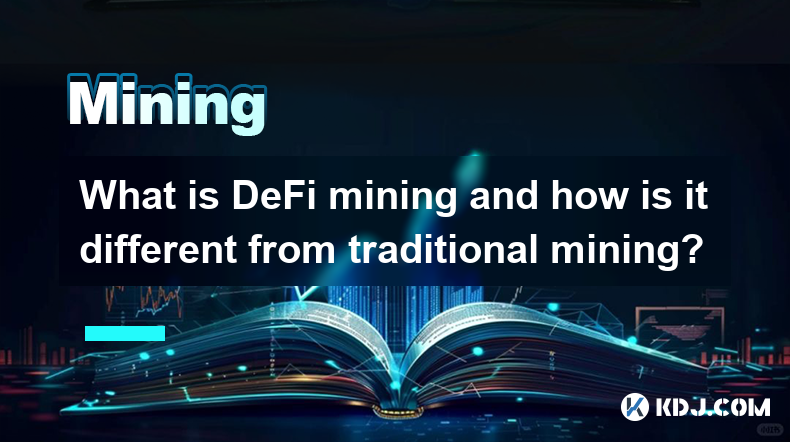
What is DeFi mining and how is it different from traditional mining?
Apr 02,2025 at 09:50am
DeFi mining, also known as yield farming or liquidity mining, is a process within the decentralized finance (DeFi) ecosystem where users provide liquidity to decentralized platforms in exchange for rewards. Unlike traditional mining, which involves solving complex mathematical problems to validate transactions and add them to a blockchain, DeFi mining f...
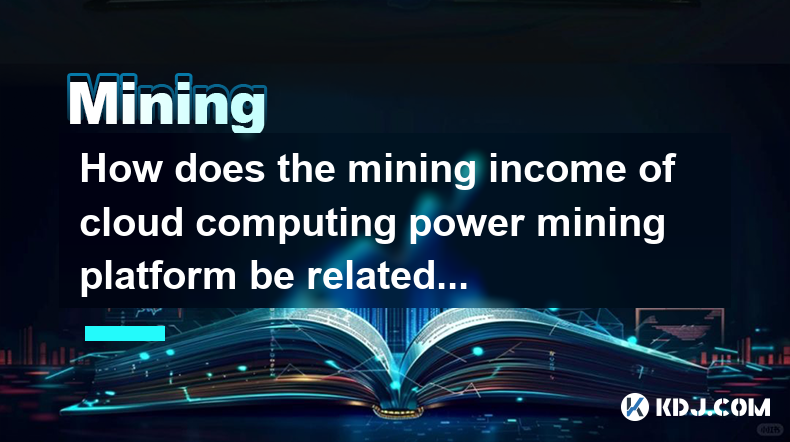
How does the mining income of cloud computing power mining platform be related to mining pool allocation?
Apr 02,2025 at 01:56am
The relationship between the mining income of a cloud computing power mining platform and the allocation of mining pools is a crucial aspect of cryptocurrency mining. Mining income is influenced by various factors such as the efficiency of the mining hardware, electricity costs, and the specific cryptocurrency being mined. However, the allocation of min...
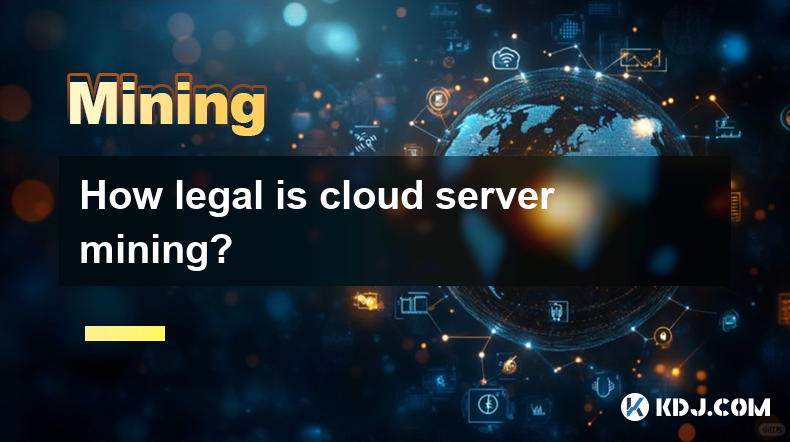
How legal is cloud server mining?
Apr 01,2025 at 08:08am
Cloud server mining has become an increasingly popular method for individuals and companies to participate in cryptocurrency mining without the need for expensive hardware and high electricity costs. However, the legality of cloud server mining can be a complex issue, as it varies by jurisdiction and depends on several factors. This article will explore...
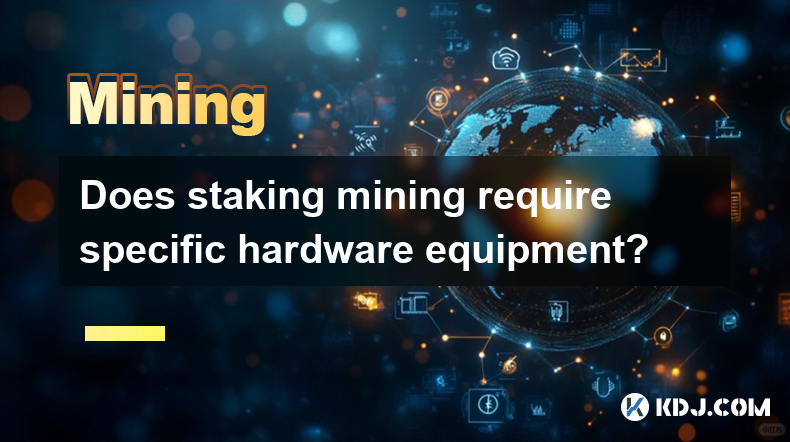
Does staking mining require specific hardware equipment?
Apr 02,2025 at 08:21am
Staking mining, often referred to simply as staking, is a process used by various cryptocurrencies to secure their networks and validate transactions. Unlike traditional mining, which often requires specialized hardware like ASICs (Application-Specific Integrated Circuits) or high-performance GPUs (Graphics Processing Units), staking typically does not ...
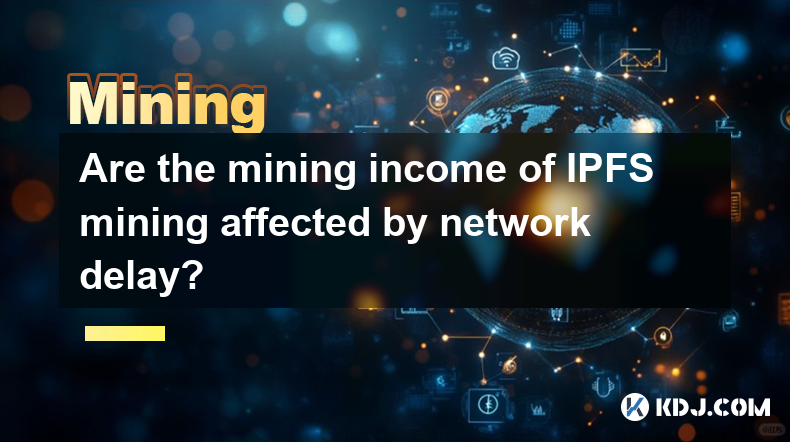
Are the mining income of IPFS mining affected by network delay?
Apr 01,2025 at 09:36pm
Are the Mining Incomes of IPFS Mining Affected by Network Delay? Understanding IPFS Mining and Network Delay's ImpactIPFS (InterPlanetary File System) mining, unlike Bitcoin mining, doesn't involve solving complex cryptographic puzzles. Instead, it focuses on providing storage and bandwidth to the network. Miners earn rewards for storing and sharing dat...
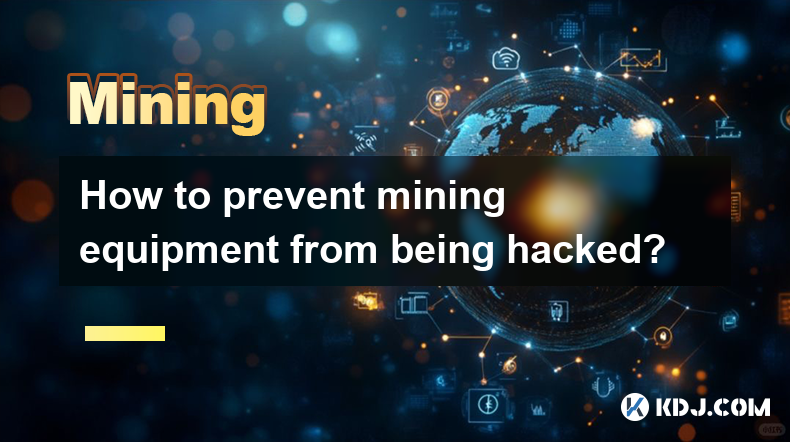
How to prevent mining equipment from being hacked?
Apr 01,2025 at 06:22am
Understanding the ThreatsCryptocurrency mining, while potentially lucrative, exposes your equipment to various cyber threats. These threats range from simple malware infections that steal your mining profits to sophisticated attacks that hijack your entire operation. Understanding these threats is the first step in effective protection. This includes r...

What is DeFi mining and how is it different from traditional mining?
Apr 02,2025 at 09:50am
DeFi mining, also known as yield farming or liquidity mining, is a process within the decentralized finance (DeFi) ecosystem where users provide liquidity to decentralized platforms in exchange for rewards. Unlike traditional mining, which involves solving complex mathematical problems to validate transactions and add them to a blockchain, DeFi mining f...

How does the mining income of cloud computing power mining platform be related to mining pool allocation?
Apr 02,2025 at 01:56am
The relationship between the mining income of a cloud computing power mining platform and the allocation of mining pools is a crucial aspect of cryptocurrency mining. Mining income is influenced by various factors such as the efficiency of the mining hardware, electricity costs, and the specific cryptocurrency being mined. However, the allocation of min...

How legal is cloud server mining?
Apr 01,2025 at 08:08am
Cloud server mining has become an increasingly popular method for individuals and companies to participate in cryptocurrency mining without the need for expensive hardware and high electricity costs. However, the legality of cloud server mining can be a complex issue, as it varies by jurisdiction and depends on several factors. This article will explore...

Does staking mining require specific hardware equipment?
Apr 02,2025 at 08:21am
Staking mining, often referred to simply as staking, is a process used by various cryptocurrencies to secure their networks and validate transactions. Unlike traditional mining, which often requires specialized hardware like ASICs (Application-Specific Integrated Circuits) or high-performance GPUs (Graphics Processing Units), staking typically does not ...

Are the mining income of IPFS mining affected by network delay?
Apr 01,2025 at 09:36pm
Are the Mining Incomes of IPFS Mining Affected by Network Delay? Understanding IPFS Mining and Network Delay's ImpactIPFS (InterPlanetary File System) mining, unlike Bitcoin mining, doesn't involve solving complex cryptographic puzzles. Instead, it focuses on providing storage and bandwidth to the network. Miners earn rewards for storing and sharing dat...

How to prevent mining equipment from being hacked?
Apr 01,2025 at 06:22am
Understanding the ThreatsCryptocurrency mining, while potentially lucrative, exposes your equipment to various cyber threats. These threats range from simple malware infections that steal your mining profits to sophisticated attacks that hijack your entire operation. Understanding these threats is the first step in effective protection. This includes r...
See all articles
























































































